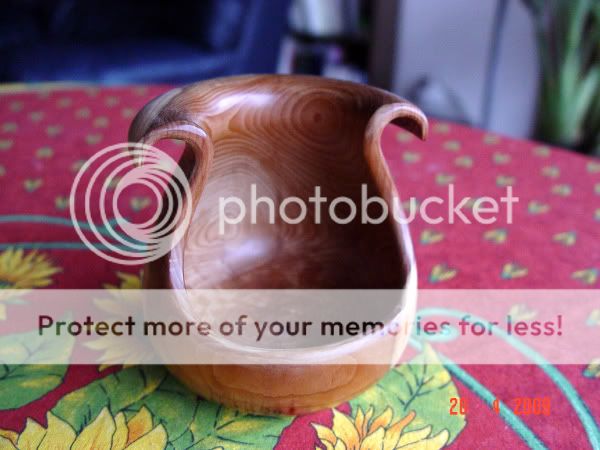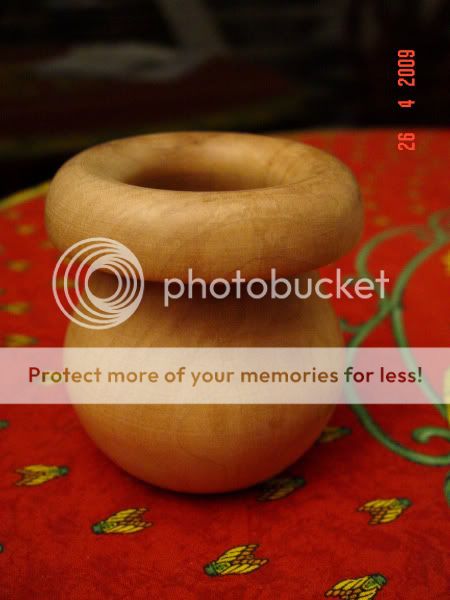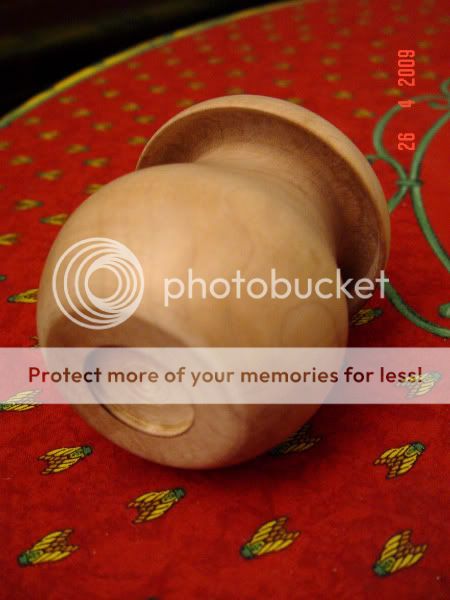Hi Bob, no the dish was turned complete and then, heart in hand, I cut the side out on my band saw! The complete dish looked a bit like this one I did as a second one to see if it really was such a swine to get the lip correct? It was !!!
This one was turned in maple and I am still trying to decide as to whether to cut it the same. They make lovely dishes to put peanuts and the like in when we have friends round and the French neighbours love them!
I was unsure from the video as to the tools that you were using even though it was clear in the way they were being used. Would it be possible to say what you are using as it may well be the PC that I a using that led to the confusion for me?
The grind angle you use is different to me and I tend to use the same for both the spindle and the bowl gouges, about 45 deg. I use a home made grinding gig as shown on my photobucket. I have never really got to grips with scrapers and tend to use them when I really have to. Perhapse I should knuckel down and practice with the ones I have? As for the loose rings I turn on the goblets a nd baby rattles, I made my tool from and old 1 1/4" chisle and some time on my grinder. It works a treat and does both sides of the rings.
I have done 2 square plates. One for us and one for a friend and as I also love pyrography, that gets onto my pieces as well. If you have a look at the photobucket address in my signature it gives some photos of my play time.
I love my spindle gouges and tend to use them even when I suppose that I should be using my bowl gouges. The bowl gouges seem to be so combersome at times for the smaller pieces? I also use my scew chisels when I can. A 1" oval and a 1/2" square with the corners slightly rounded. I have taught myself to use them right, normal for me, and left handed. It caused tears to start, but was woth every one of them in the end. Still not a tool to take liberties with though!
I love that idea of boring a hole to start and using an expansion chuck to hold the raw blank. On plates and thin blanks I have always used hot glue and a 4" face plate with a wood block screwed on it. Or a screw chuck on deper blanks, but that idea is great for the thinner blanks!
I didn't even want to do turning, till I tried!





































